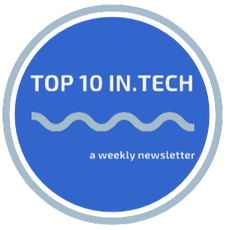|
1. SaaS METRIC OF THE WEEK: CAC PAYBACK: Cash is king in the SaaS world, and the shorter the payback period is for the acquisition (CAC), the better (getting to cash flow positive). Here is an article that looks at ways to shorten CAC Payback.
2. OUTBOUND vs. INBOUND: How you handle an inbound lead vs. an outbound lead is quite different. Check this article from Jack Jorgovan on how Outbound leads differ (and how to close them). Oh, and do you want to binge some Outbound Sales TV? The team at predictable revenue has been running over 50 outbound sales experiments to find out what works best (and what doesn't). Watch the whole series on YouTube. 3. MLP: For your tech dictionaries - that's Minimum Lovable Product). MVP (Minimum Viable Product) is OK, but what if no one likes it? FirstRound capital uses the analogy of burnt pizza - pointing out that the fastest and cheapest functional prototype could produce a poor or flawed version of something that people may actually love. 4. SALES EFFICIENCY: Tomasz Tunguz has a banger of a post that takes a deep dive into Sales Efficiency through and after the COVID era. Since 2016, on average, Public SaaS sales efficiency has dropped from 52% to 47% (a drop of about 10%), and he notes that it isn't COVID - it's competition that's creating the slide. 5. PRODUCT MARKET FIT: To me, Product Market Fit is as constantly evolving (and never finished) as pricing. But way smarter people than me write about PMF in incredibly detailed ways - such as Brian Balfour, who wrote a fantastic article on the subject that is now almost ten years old and still very relevant for figuring out what stage(s) your startup may be at. 6. PRICING: Speaking of pricing never being finished (see above), here is a bookmarkable guide on leveraging product usage data to evolve your business and product packaging and pricing. 7. WEB3: The space has been quite volatile for several years, but investments and startups continue in the space, and McKinsey has a great article outlining the structures of Web3 that can take it beyond all of the hype and even have one for all you Web3-new CEOs. 8. FRAMEWORKS 1: HEART Framework - this was designed by Google'sGoogle's research team and is a methodology to improve software user experience (UX). It'sIt's an acronym for measurable UX evaluation: Happiness, Engagement, Adoption, Retention, and Task Success. 9. FRAMEWORKS 2: PIRATE METRICS (or AAARRR) were first proposed by 500 Startups. The great thing about this acronym-based grouping of metrics is that it can apply to non-software products or services as well as traditional SaaS as it's all about awareness/activation: Awareness, Acquisition, Activation, Revenue, Retention, Referral. 10. CASE STUDY: Sequoia Capital. According to a report from CB Insights (PDF version here), Sequoia Cap backed almost 100 startups last year. 1/4 of which were fintech startups. Three of the four deals in the capital markets sub-sector were follow-on rounds, meaning they remain pretty frothy in this category. POD OF THE WEEK: Being first to market is not necessarily a winning advantage (looking at you, Friendster). Des Traynor (co-founder at Intercom and a great speaker) dives into elements that make a move into Enterprise effective. Comments are closed.
|
|
